Introduction
Though the outbreak of COVID-19 challenged almost all the socio-economic sectors of most countries worldwide, educational institutions may have been the worst affected fields. Many institutes became bewildered and helpless as they had to shut down their activities, while others partially continued their academic activities. In other cases, some educational institutions decided to continue activities even though they were not aware of implementation processes, nor were they aware of the upcoming challenges. They only knew they had to survive and provide their students with an educational service so students could remain engaged in their studies and thus feel active. They only knew they needed to carry on without technology preparation (Pal & Patra, 2021). Quoting Michel Kerres, Zawacki-Richter (2021) rightly comments on the situation when he says, “No managerial strategies, no teacher training, no design or technological policies, no arguments about the pros and cons – we just do it” (p. 218). The reason is that the Coronavirus enforced the closing of in-person activities in all the institutions as each country’s Government declared lockdown for no fixed time (Education in the time of COVID-19, 2020). Thus, there remained no option for the schools, colleges, and universities of the world except to go online (Dhawan, 2020; Kim, 2020; König et al., 2020; Pal & Patra, 2021; Rapanta et al., 2020). The institutions that shifted their teaching mode from in-person to online experimented with many techniques to engage their students in learning. Making video-based materials was one that some teachers applied at Daffodil International University (DIU) in Bangladesh. Being a technology-driven educational institute, DIU wanted to be the forerunner in providing effective online education. As a part of its mission, the university modified its own Learning Management System (LMS) named Blended Learning Center (BLC), to provide Internet-based courses offered synchronously and asynchronously. This LMS, a new hybrid educational tool, was used for higher level studies on-campus and distance students, unlocked opportunities for educators to prepare video-based materials to facilitate the teaching process (Said, 2021). However, the LMS had been partially used even during the pre-COVID-19 era.
Using video-based materials, especially YouTube materials, in the classroom is not a new trend; instead, it has been an ongoing practice for decades in educational institutes. During the face-to-face or in-person classes, many DIU teachers also use online materials, such as YouTube videos, website links, e-texts, articles, etc., sporadically. However, when classes moved online, some teachers put effort into customizing their lessons with self-made video lectures to facilitate students’ learning.
The answer to the question of why these teachers did not want to make their own video lectures instead of using YouTube videos before the pandemic, but readily did so during the pandemic is not hard to find. We believe the teaching-learning methodology during COVID-19 differed from the previous scenario. One of the reasons might have been to keep students from dropping out of school, considering the financial crisis due to the worldwide economic situation at the time. Whatever the case was, some pertinent questions came to mind. To what extent were the teachers successful in teaching students with self-made video lectures? How satisfied were the students with the video-based materials used as pedagogical content knowledge (PCK) (Rapanta et al., 2020)? Did this method create a positive or negative outcome? The present paper will discuss all the questions mentioned above and many more, and thus, it will explore and critically discuss the impact of video-based materials on students’ learning.
Literature Review
Although much literature related to online teaching and learning in general is available, it is often solely related to publicly available videos, such as YouTube videos, only a few researchers have paid attention to teacher-created video-based materials and their impact on students (Almaiah et al., 2020; Pal & Patra, 2020). In this section, we will briefly discuss the articles available related to this topic.
Cruse (2007) points out videos can ensure multimodal learning by involving learners visually, aurally, and effectively focusing on Gardner’s multiple intelligences theory. She summarizes various studies conducted with children, older students, and special populations and shows how video is an effective educational tool. Furthermore, she mentions that videos can contextualize language for English as a Second Language (ESL) learners. She emphasizes that media literacy related to analyzing and creating messages can improve reading and writing skills. She also warns educators that on selecting and using videos, they must keep the purpose in mind throughout the stages of the lesson. Like Cruse, Bravo et al. (2011) believe that using videos can increase learners’ motivation, contributing meaningfully to their learning process. They conducted a qualitative study on 487 engineering students at the Technical University of Catalonia, Spain, and commented on what students think of the created videos by the lecturers as complementary materials helping them in their learning process. In another study (Khalid, 2021) involving a sample of ten students, investigating the use of YouTube videos in a literature class in a community college in Saudi Arabia, the author commented, “students eager to use technology such as YouTube appear more comfortable in the classroom environment (…); 80% of students feel happy, and they are familiar with using YouTube which helps them in getting a better understanding of their lessons’’ (p. 541).
Yousef et al. (2014), in a review study on 76 peer-reviewed research papers involving Video-based learning (VBL) publications between 2003 and 2014, focuses on “the positive impact of video broadcast and streaming in education” (p. 123), though they also stress “the importance of the pedagogical aspect for an effective VBL experience” (p. 124). This study questions the effective use of VBL in terms of lack of trained instructors, video length, teacher-centered approach, etc. However, it highlights the prospects of VBL in Massive Open Online Courses (MOOCs) and flipped classrooms, ensuring self-paced learning. The article summarizes two studies on flipped classrooms conducted at the University of Western Sydney and Capital University, Ohio, in 2013 by pointing out the higher level of students’ satisfaction with instruction and feedback and in-class activities like discussion and problem-solving with VBL.
A quantitative study (Faye, 2014) conducted on 213 first-year students studying at the undergraduate level at Universiti Teknologi PETRONAS (UTP), Malaysia, shows that students preferred their teacher-prepared videos for mathematics courses rather than the available educational videos on YouTube because of the familiarity of their teachers, being able to control content and guide students emphasizing specific topics. The researcher points out, “Also among the participants, 80.7% would suggest all their Mathematics lecturers create their own YouTube videos for teaching, while 19.3% would not. The results suggest that the students generally prefer own-lecturer-made videos compared to videos created by other people” (p. 233).
Carmichael et al. (2018) also claim that videos are significantly contributing to “widening participation, emotional engagement, and overall course engagement” (p. 5). For them, using teacher-made videos for engaging students more in the classroom is one of the approaches which “provides great benefits to teachers and learners, stimulating stronger course of performance in many contexts, and affecting students’ motivations, confidence and attitudes positively” (p. 5). Although Carmichael et al. do not directly discuss teacher-made videos, they indirectly focus on them. They say that “students appear to find videos which include instructor’s image to be more engaging, or they engage more with the course content as a result of instructor’s presence in the video” (p. 5). For exploring the impact of using videos in accelerating “critical thinking,” “knowledge development,” and “student engagement,” in this study they explored 270 journal articles besides setting up and running an online experiment in a lab at Purdue University involving 100 undergraduate students aged 18-22 years old. They point out the many ways videos can benefit students both inside and outside the classroom. For them, video can support various pedagogical strategies such as “teaching-focused and learning-focused methods,” and thus enhance “teaching methods and learning outcomes” (p. 8). They illustrate that the video-based teaching-learning approach stimulates students to be more connected to the class, as it provides “a vehicle for increasing access to practical demonstrations” as well as “ubiquitous learning, the opportunity of learning anywhere at any time” (p. 8). They also claim that video can develop the students’ critical thinking and knowledge level, besides engaging them emotionally.
Nikopoulou-Smyrni and Nikopoulos (2010) emphasize that employing “technological advances as powerful pedagogical tools” can enhance students’ “satisfaction and motivation during the learning process” (pp. 304-305). The researchers conducted a study on five postgraduate students who attended sixteen five-minute lectures related to Kinesiology and Psychology. Out of these sixteen lectures, eight were video-based, and the rest eight were traditional (with words/text only). However, the educators used PowerPoint slides in each of the classes to maintain the source of information, chronology, and delivery of the lectures. They also tested students with quizzes on their learning from both methods. All five students claimed that “the use of video improved their attention to the topic of the lecture and also videos had a positive impact on their motivation as well as concentration levels” because videos worked as “a supplement” to make the classroom “more exciting and interactive” (pp. 307-308). Their comparative analysis between the video-based and traditional lecture methods opens a new window to exploit video-clip in the classroom for better engagement and motivation.
Scagnoli et al. (2017), discuss the various benefits of video lectures in online classes. Although there are some disparities between the teacher-made video materials used as an ‘add-on’ in online and offline classes, and video lectures, video-based materials and video lectures were inter-connected. A video lecture refers to the whole class, whereas a teacher-made video suggests a supplement in either an online or a face-to-face class. Scagnoli et al. mention that video-based teaching and video lectures can stimulate the learning environment in many ways, including enhancing students’ satisfaction and learning achievement, contributing to broadening students’ outlook, reinforcing new knowledge, making the learning convenient and flexible, increasing motivation, emphasizing information gap, preparing students for better outcomes, and creating a collaborative learning atmosphere. They argue that the YouTube Generation, or what we may call Generation Z or the Post-millennial Generation, “is familiar and comfortable with informing and educating themselves via online videos” (p. 2). As a result, they feel there should be no doubt that video lectures and video-based teaching can speed up students’ interaction with the content and thus help them create “an emotional tie with the topic” (p. 10).
Very little of the research under discussion explores the various benefits of video-based learning, which ultimately leads to the concept of ‘flipped classroom.’ However, the purpose of the present paper is not about the benefits of a ‘flipped classroom’ or student engagement in ‘flipped classroom;’ but rather it focuses on the impact of teacher-made video materials used in the classroom during the COVID-19 pandemic, specifically, on the students of a private university in Bangladesh enrolled in their respective courses (and not for a broader audience). As a result, this paper seems to be unique in terms of its subject matter, locus, range, and approach.
The research questions to be considered are:
- How were the video-based materials developed by teachers effective in facilitating the online classroom mode of teaching their respective courses during the pandemic?
- How did the videos produced by teachers and YouTube professionals differ in ensuring students’ satisfaction and motivation?
- To what extent were the video-based materials developed by the teachers helpful to the learners?
Methodology
Video-based materials include TV, CDs, and YouTube content to ensure technology-assisted learning within the teaching mode in flipped classrooms. However, this paper only focuses on the popular educational YouTube videos serving the necessity of teachers-learners at the tertiary level of education in Bangladesh to be compared with the video materials produced by the teachers after the sudden shift from physical class to online platform taking place in March 2020. Therefore, the purpose of this study is to measure the impact of teacher-made video materials on learners’ overall learning experience. To achieve this purpose the mixed method research (MMR) design was used as Scagnoli et al. also proposes “The methodology was chosen because an integration of qualitative and quantitative data would lead to have a better understanding of the research problem than either of each alone” (2017, p. 2). Besides, according to Johnson et al. (2007) MMR is defined as “the type of research in which a researcher or team of researchers combines elements of qualitative and quantitative research approaches (e. g., use of qualitative and quantitative viewpoints, data collection, analysis, inference techniques) for the broad purposes of breadth and depth of understanding and corroboration” (p. 123).
The researchers conducted the study among 200 participants with the help of a questionnaire (Appendix) targeting their opinions and evaluation of the teacher-produced videos. They responded to questions 10, 12 and 13 by sharing their comments and opinions/suggestions, and the rest of the questions collected quantitative data. There was no intervention during the data collection process as the teachers just distributed the link to the questionnaire to their students through email, and the students filled in the Google Form on their own.
The data were analyzed through mixed method research design. While analyzing the data, the researchers thoroughly understood of why and how video-based materials were used for the tertiary level students in Bangladesh during the pandemic and how much they facilitated learning. However, the teachers in this discussion are not professional content-makers; they are academics dealing with courses ranging from literature to language and linguistics studies in the Department of English at Daffodil International University.
The paper ends with suggestions/recommendations for the academics producing such content in the future, expanding the area of studies in this field which is not much explored in the Bangladeshi context.
Informed Consent
All the participants taking part in this study were informed via their course teachers about the distribution of a questionnaire developed in Google Forms. The students voluntarily agreed to participate in the study and gave their oral consent. The researchers confirmed that the data would be utilized for this research purpose only and no personal data were collected through the questionnaire.
Instruments
The data were collected through a questionnaire (Appendix). After formulating hypotheses and identifying the aim and goal of the research, the questionnaire was systematically developed. There were two questions on rating scales where 1 stood for ‘poor/not satisfied at all’ and 5 for ‘excellent/extremely satisfied,’ respectively. Here is an example from the questionnaire: Q3. How will you rate your overall experience with the teacher-made video lectures? Here 1=poor, 5=excellent
The questionnaire included ten close-ended questions (multiple-choice questions) and three open-ended questions. Eight questions aimed at determining the effectiveness of video-based materials in facilitating the online classroom teaching mode during the pandemic. For example:
Q6. How much do the teacher-made video lectures assist your online learning? The teacher-made video lectures assist me…
a. Greatly b. Moderately c. Slightly d. Not at all.
There were two questions to find out the differences in the content, design, and technical aspects ensuring students’ satisfaction level with the videos produced by teachers and professional content-makers on YouTube. There were two initial questions to determine the number of courses the student was undertaking and if the teacher was using video-based materials. The last question was placed to ask for students’ suggestions, ideas, or preferences regarding the use of the teacher-made video lectures. Q13. Do you have any suggestions, ideas or preferences regarding the use of the teacher-made video lectures? Please, write your response.
Collected data were analyzed with the help of Google’s built in online survey responses and later some responses were transferred into figures (Figures 4, 5 and 6) by using Microsoft Excel.
Participants
To conduct this study, primary data were collected by distributing a questionnaire to 200 undergraduate students from different departments at Daffodil International University (DIU), a renowned private university in Bangladesh. Male and female students aged 19 to 24 participated in the survey. Two Google Meet meetings had been called with the presence of the researchers to take oral consent from the participants before they were asked to fill in the questionnaire survey. The questionnaire was distributed to the students who experienced video lectures in their respective courses in Summer 2020, and they were free to choose the video lectures of their teachers as per their choice.
Data Analysis & Results
The data collected through questionnaire (Appendix) survey are presented by the following figures and a descriptive model is used to analyze the comments/suggestions of the participants collected by questions no. 10, 12 and 13 (Appendix) and presented in the ‘Results & Discussion’ and ‘Implications & Recommendations’ sections. For example, in response to one introductory question about their viewing responses on teacher-made videos, 39% students mentioned that they watched all the videos of the course (Figure 1).
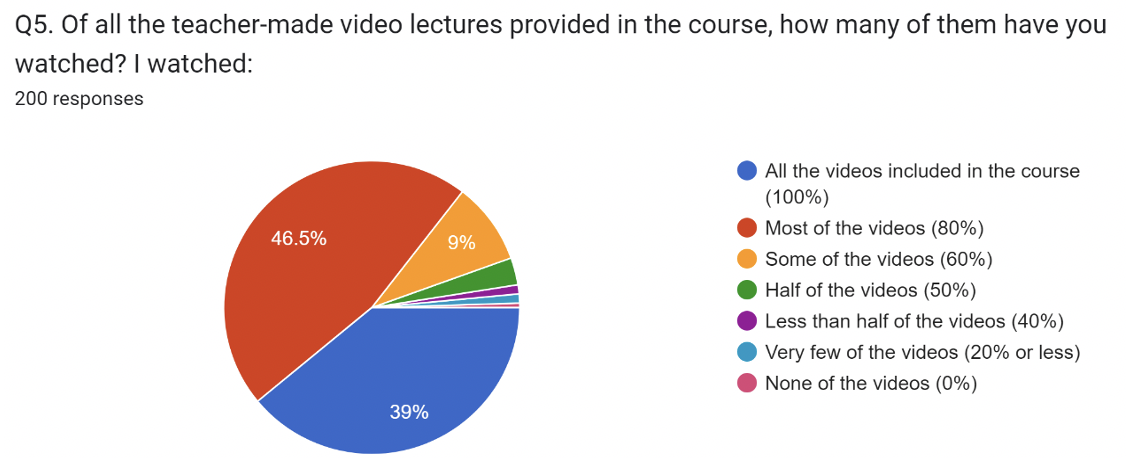
Figure 1: Participants’ viewing responses
In answer to the following question (Figure 2), 64.5% participants agreed that the video lectures contribute to their learning experience greatly.
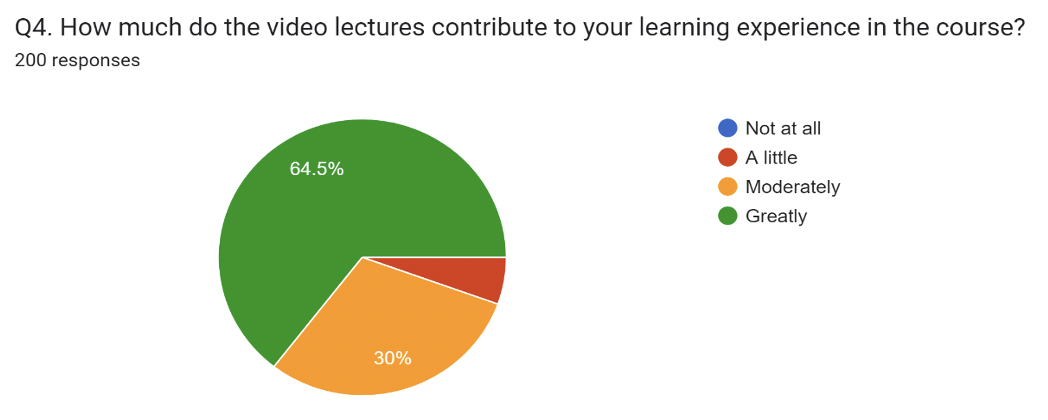
Figure 2: Contribution of video lectures to the learning experience
On the other hand, 69.5% participants mentioned that the teacher-made video lectures assist them in their online learning greatly (Figure 3).
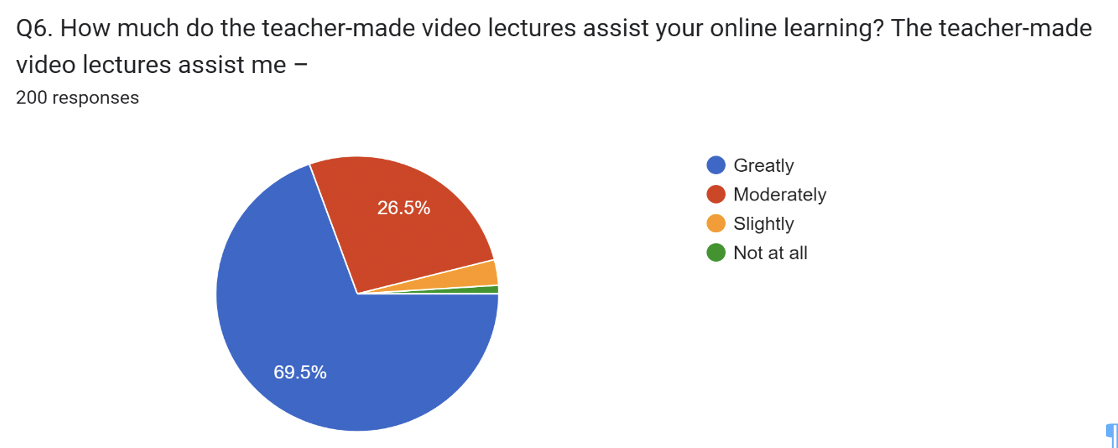
Figure 3: Contribution of video lectures to the online learning experience
A comparison on learners’ responses to using video materials in the classroom imply that they benefit more from those audio-visual materials to cope with online learning than their overall learning experience regardless of the circumstances. For example, figure 4 shows that almost 70% of students think it is more helpful for online learning. Moreover, nearly 65% think those videos also support them throughout their learning experience irrespective of context.
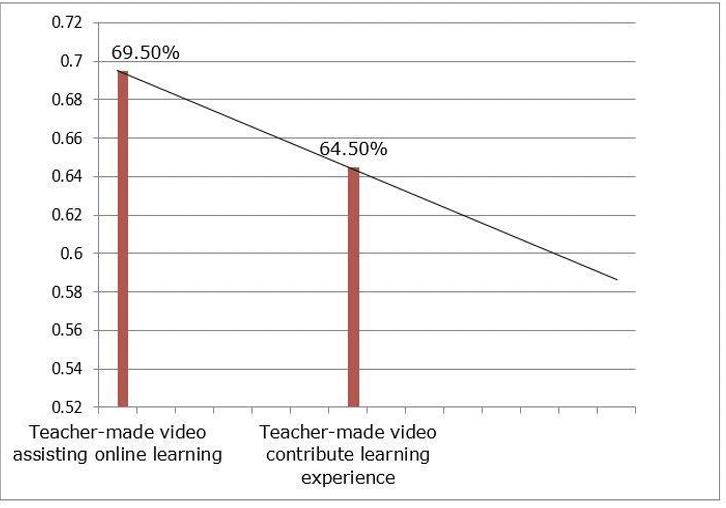
Figure 4: Learners’ perspective on the use of video materials in the classroom
Data derived from the auto-generated pie charts from Google Form survey responses for figure 5 shows that 60% of learners prefer teacher-made videos to 39.5% preferring YouTube videos. When it comes to what motivates them to learn more, a considerable difference is observed as almost 96% of the students say their teacher-made videos encourage and help them learn better.
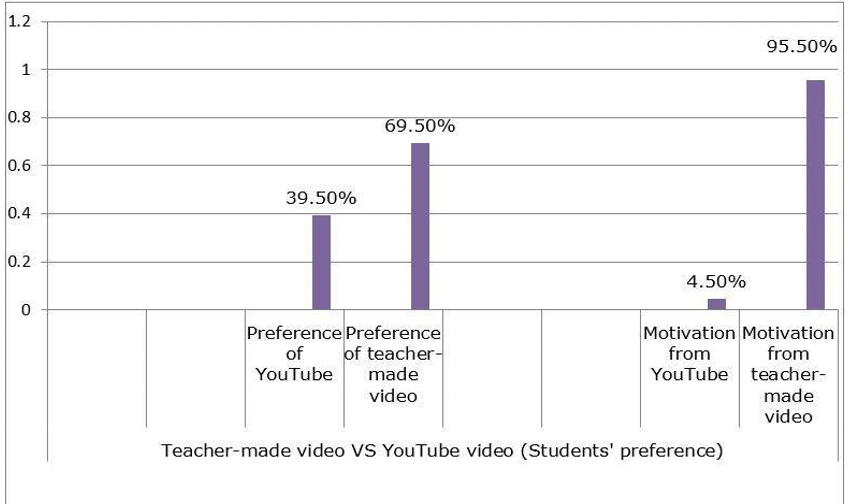
Figure 5: Learners’ perspectives on YouTube and teacher-made videos
In response to the question, if the learners benefited from teacher-made videos in the course, 98% of learners responded yes, whereas only 2% responded the opposite. On the other hand, only 49% of students agreed that they are very satisfied with the teacher-made videos, which leaves scope for improvement.
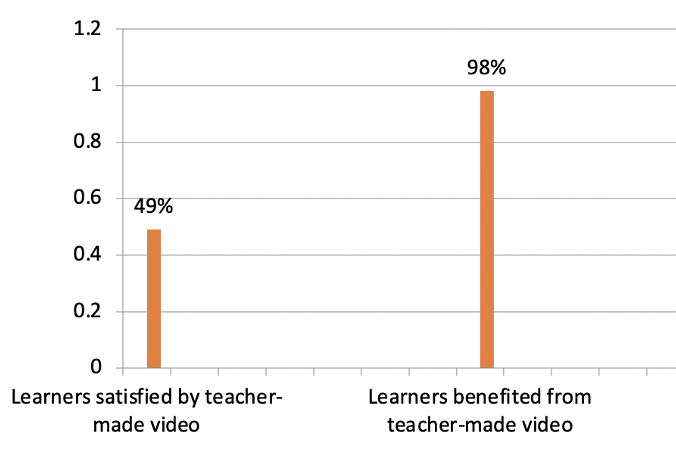
Figure 6: Learners’ perspective on teacher-made video
Result and Discussion
Though students are divided in their opinions, most of the students favor teacher-made video lectures. As some students mention reasons for preferring teacher-made video lectures to the popular YouTube videos:
Because these videos are on point, easy to understand, information is given according to our standard.
Could be because seeing a familiar face helps. Not to mention, our teachers are great. And they know better, how to communicate with us, than the people who make YouTube videos. Not that the YouTube videos aren't great but our teachers' are better.
It is because the YouTube videos are narrated by native speakers of other countries. So it is tough to get the words properly. So i prefer teacher-made Video lectures and our teachers also give us the exact information that we need.
I personally think that our teachers are more experienced and as we also know their teaching style and they also can understand our weakness, they can easily interact with us. This is why I prefer our teacher's video lectures.
Our teachers understand our problems and try to make us understand in that way.
Overall, a few of them mentioned the benefits of using videos as they could just pause and watch videos repeatedly for in-depth understanding. On the other hand, 39.5% opt for the popular YouTube videos on the ground of YouTube having more options to choose from with improved quality. For example, one student mentions, “because it is easy to find on YouTube. And YouTube has options to improve quality.”
When the students are asked to put forward suggestions, ideas or preferences regarding using the teacher-made video lectures, they suggest:
I have a suggestion that, teacher made video lectures can be more attractive by using sounds and visuals.
It can be held in proper lighting room or it can be organized by strong sound system. Also if the videos available other online platform like YouTube or any online page that related to English literature.
It will be interesting for us if we get video lectures with much practical examples than slides and topic related games will be way interesting for us and our learning will be good.
If the teacher made video lectures are made in the timeline of 10-12 minutes with brief concepts and we are assessed based on it, I think it might be more fruitful.
Sound quality of some videos are so poor in quality. So next time if it is possible course teacher should [be] more careful about this.
It could be better if the teacher sometimes used Bengali to make the text more understandable.
It will be better if they add more information in animated form resolution should be high.
Anonymous responses as to the implication of the use of teacher-made videos:
Teacher made video lectures are greatly beneficial to the students. It's a good way of learning anything properly. I think these videos are already interesting. But I have a suggestion that, teacher made video lectures can be more attractive by using sounds and visuals.
If the pandemic situation is not over and we still need to continue our online classes, it will be very helpful if all the teachers make video lectures.
Teacher made videos are so beneficial for us. We can get a clear concept easily by the help of the videos. So, we need more videos from our teacher.
I wish every course teacher made video lectures. It will really [be] helpful for us.
I'm really love this method of teaching. It made me confident and punctual.
This process of teacher-made video should be continued.
It has been observed that students find teacher-made videos to be more effective in terms of content delivery in the most precise manner targeting learners' requirements which is quite related to the findings of the study by Cruse (2007) where she mentions that videos can be an effective educational tool. The present study mainly deals with the use of teacher-made videos as supplements to facilitate online learning, whereas Cruse suggests that a strategic plan is required to maximize the benefits of learning outcomes.
One of the findings of the current study is that teacher-made videos accelerate students’ motivation to participate in the classes. The videos help students get accustomed to online learning and contribute to their online learning experience. This is supported by a number of studies (Bravo et al., 2011; Carmichael et al., 2018; Nikopoulou-Smyrni and Nikopoulos, 2010; Scagnoli et al., 2017) in which the researchers have found that students feel more motivated because these videos help students get emotionally engaged, finding teachers’ approach and efforts novel and emphasizing students’ information gap. However, the participants of this study also point out that teacher-made videos lack the standard quality of YouTube videos regarding sound-proofing, sound quality and screen quality which comply with the findings of Yousef et al., (2014) as they mention that lack of trained instructors, video length, teacher-centered approach can obstruct the learners to achieve their goal. Although almost all the students benefited greatly from the teacher-made videos, it is only half of the students who are completely satisfied with them because of the aforementioned reasons. Besides, nearly 90% of the students watch almost all the videos provided by the teachers. It is no surprise that 60.5% students prefer teacher-made video lectures to the popular YouTube videos on the basis of the familiar face and accent of their teachers, getting the exact information required, the teachers’ ability to understand the weaknesses of the learners and customized content which is also supported by the study of Faye (2014) in which she mentions that students prefer teacher-made videos because of the familiarity of their teachers, who can control content and guide students emphasizing specific topics.
Besides, an interesting observation from the study of Scagnoli et al. (2017) is that video-based materials can be used as an ‘add-on’ in both online and offline classes and can create a collaborative learning atmosphere among students, whereas the present study solely focuses on online learning. One additional finding of the present study is that students want to have available teacher-made videos to substantiate their learning. They suggest that having a specific platform for these videos can widen their accessibility at their convenience. They also recommend that the videos’ content include animation, gamification for making it more interactive and student-centered.
Limitations
While the study has many implications for enhancing students’ learning, it also has some limitations. Although the study attempts to collect the data systematically, it does not have any pre-test and post-test of target group learners, which could have made the study more reliable. Furthermore, it is based on only students’ perspectives, so the data were collected only through questionnaires. Additionally, the study could have been conducted with an even largersample. However, since few teachers use video-based materials in the department, only those students who experienced teacher-made video lectures were reached.
Another limitation after completing the interpretation of the findings is that more specific questions to pinpoint the students’ perspectives on the differences between the YouTube videos and teacher-made videos in terms of content, design, technical aspects, and others should have been included. The researchers pointed out the differences from observing the videos under discussion. The researchers also intended to conduct a focused-group discussion with the teachers who produced their materials/content to assist their learners online during the pandemic to identify the teachers’ reasons for using video-based materials for their courses. It was also in the plan to review a few videos to understand the teachers’ purpose in producing those contents and to analyze the content, design, and technical aspects.
Implications and Recommendations
The study shows that learners prefer teacher-made videos to facilitate online learning and motivate them to study. They prefer teacher-made videos since they can watch a familiar face instructing them, listen to a familiar accent, and get content-specific information, which helps them perform better in class activities and exams. In addition, they believe that their teachers understand the students’ specific needs and focus on developing the weak areas in the videos, thereby making the videos more connected and precise to the learners’ needs, something not found in YouTube videos. Moreover, the familiar teaching style, concise presentation of the lecture, and information given according to their standard help clarify the concepts and facilitate online learning. Furthermore, the data show that this particular teaching method inspires students to study.
Even though learners greatly benefit from the teacher-made videos, they provide some suggestions regarding the sound and video qualities as observed from the data. They prefer to have an online platform or a teacher’s YouTube channel from where they can easily download the videos at their convenience. Additionally, learners prefer short videos that are easier and with more interaction, including games and puzzles.
As the study upholds positive implications for the learners, it is strongly suggested that teachers include self-made videos in their respective courses to facilitate online teaching-learning.
Conclusion
The study was an attempt to observe the students' feedback systematically while using teachers’ self-developed materials when all the educational institutions suddenly went online. It also tried to investigate if these teacher-made videos can motivate and inspire students in their studies and, hence, be suggested to other teachers. Along with some suggestions regarding the quality and availability of those videos, the learners shared very positive feedback as they believe using these videos certainly help them to be better supported, and get a clear idea of the subject matter since they are familiar with the teachers’ face and accent, unlike the YouTube content-makers. Moreover, these video lectures inspire the students to pay more attention to their studies in general. This could happen because students sometimes get very anxious and low energy to be online and listen to their instructors for quite a long time. Teacher-made videos allow students to work at their own time and pace. When the learners are not under pressure and hold a low affective filter, they can learn better by involving themselves. As it has been observed, all the teachers need is to be a little careful with their video quality regarding sound and length and, if possible, make them interactive by including games and puzzles to ensure learners’ active participation.
References
Almaiah, M. A., Al-Khasawneh, A., & Althunibat, A. (2020). Exploring the critical challenges and factors influencing the E-learning system usage during COVID-19 pandemic. Education and Information Technologies, 25, 5261–5280. https://doi.org/10.1007/s10639-020-10219-y
Bravo, E., García, B., Simo, P., Enache, M., & Fernandez, V. (2011). Video as a new teaching tool to increase student motivation. 2011 IEEE Global Engineering Education Conference, EDUCON. 638 - 642. https://doi.org/:10.1109/EDUCON.2011.5773205
Carmichael, M., Reid, A.-K., & Karpicke, J. D. (2018) Assessing the impact of educational video on student engagement, critical thinking and learning: The current state of play. A Sage White Paper. Sage. https://us.sagepub.com/sites/default/files/hevideolearning.pdf
Cruse, E. (2007). Using educational video in the classroom: Theory, research and practice multimodal learning styles dual-channel learning motivation and affective learning. [Corpus ID: 14027419]. Semantic Scholar. http://www.safarimontage.com/pdfs/training/UsingEducationalVideoInTheClassroom.pdf
Dhawan, S. (2020). Online learning: A panacea in the time of COVID-19 crisis. Journal of Education Technology Systems, 49(1), 5-22. https://doi.org/10.1177/0047239520934018
Education in the time of COVID-19. (2020, August). Economic Commission for Latin American and Caribbean (ECLAC). https://repositorio.cepal.org/bitstream/handle/11362/45905/1/S2000509_en.pdf
El Said, G. R. (2021). How did the Covid-19 pandemic affect higher education learning experience? An empirical investigation of learners’ academic performance at a university in a developing country. Advances in Human-Computer Interaction. 2021. https://doi.org/10.1155/2021/6649524
Faye, I. (2014). Students' perception in the use of self-made YouTube videos in teaching Mathematics. 2014 IEEE International Conference on Teaching, Assessment and Learning for Engineering (TALE). https://doi.org/10.1109/TALE.2014.7062629
Khalid, A.-Z, & Kabilan, M. (2012). The use of YouTube in teaching English literature the case of Al-Majma'ah Community College, Al-Majma'ah University (Case Study). International Journal of Linguistics, 4(4). https://doi.org/10.5296/ijl.v4i4.2930
Kim, J. (2020). Learning and teaching online during Covid‑19: Experiences of student teachers in an early childhood education practicum. International Journal of Early Childhood, 52, 145-158. https://doi.org/10.1007/s13158-020-00272-6
König, J., Jäger-Biela, D., & Glutsch, N. (2020). Adapting to online teaching during COVID- 19 school closure: teacher education and teacher competence effects among early career teachers in Germany. European Journal of Teacher Education, 43(4), 608-622. https://doi.org/10.1080/02619768.2020.1809650
Pal, D., & Patra, S. (2021). University students’ perception of video-based learning in times of COVID-19 A TAM/TTF perspective. International Journal of Human Computer Interaction, 37(10), 903-921. https://doi.org/10.1080/10447318.2020.1848164
Nikopoulou-Smyrni, P., & Nikopoulos, C. (2010). Evaluating the impact of video-based versus traditional lectures on student learning.International Research Journals, 1(8), 304-311. https://www.interesjournals.org/articles/evaluating-the-impact-of-videobased-versus-traditionallectures-on-student-learning.pdf
Rapanta, C., Botturi, L., Goodyear, P. Guàrdia, L., & Koole, M. (2020). Online university teaching during and after the Covid-19 crisis: Refocusing teacher presence and learning activity. Postdigital Science and Education, 2, 923–945. https://doi.org/10.1007/s42438-020-00155-y
Scagnoli, N. I., Choo, J., & Tian, J. (2017). Students' insights on the use of video lectures in online classes. British Journal of Educational Technology, 50(1). https://doi.org/10.1111/bjet.12572
Yousef, A. M. F., Chatti, M. Amine, & Schroeder, U. (2014). The state of video-based learning: A review and Future Perspectives.International Journal on Advances in Life Sciences, 6(3-4), 122-135. http://personales.upv.es/thinkmind/dl/journals/lifsci/lifsci_v6_n34_2014/lifsci_v6_n34_2014_4.pdf
Zawacki-Richter, O. (2021). The current state and impact of Covid-19 on digital higher education in Germany. Human Behaviour & Emerging Technologies, 3(1), 218–226. https://doi.org/10.1002/hbe2.238

